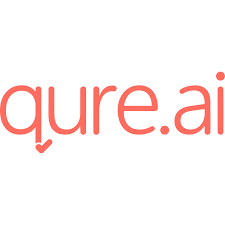What Infosys’s ₹18,000 Crore Buyback Means for Shareholders: Gains, Taxes, and Risks

What Infosys’s ₹18,000 Crore Buyback Means for Shareholders: Gains, Taxes, and Risks
What happened: Key facts of the Infosys buyback
- On 11 September 2025, the Board of Directors of Infosys approved its largest ever share buyback. The size is ₹18,000 crore.
- The buyback price is set at ₹1,800 per share, which is approximately a 19% premium over the share’s closing market price on NSE/BSE just before the announcement (about ₹1,509–₹1,512).
- The method is a tender-offer route for all equity shareholders as of a record date to be announced. It will cover up to 10 crore fully paid-up shares of face value ₹5 each, representing about 2.41% of the total paid-up equity capital (standalone basis).
What gains shareholders can expect
Here are the main benefits shareholders may derive from this buyback:
- Immediate premium if you tender your shares
If you participate in the buyback (i.e. offer your shares), you receive ₹1,800 per share, which is higher (~19%) than the market price at the time of announcement. That premium is immediate gain for those selling. - Improvement in per-share financial metrics
Because the buyback reduces the number of shares outstanding (about 2.41%), the same profits are spread over fewer shares. That tends to increase metrics like Earnings Per Share (EPS) and Return on Equity (RoE) for remaining shareholders. - Signal of confidence from management
Such a large buyback suggests that the company believes its shares are undervalued, has strong cash flow, and doesn’t need to invest all its surplus cash immediately elsewhere. This positive signal can help restore or boost investor sentiment. - Tax efficiency compared to dividends (for some investors)
Buybacks via tender offer route sometimes present more favorable tax treatment compared to dividends, which are taxed under the income slab rates. Depending on how the law treats “deemed dividend” or capital gains, shareholders may find them more efficient.
Tax implications for shareholders
Tax rules around buybacks have changed recently; knowing the current regime is crucial.
- Deemed Dividend under Section 2(22)(f)
From 1 October 2024, share buybacks in India are treated under Section 2(22)(f) of the Income Tax Act. This means that any consideration received by a shareholder in a buyback is treated as a deemed dividend. That amount is taxed in the hands of the shareholder according to their individual income tax slab. - No exemption under Section 10(34A) post-1 October 2024 for buybacks
Earlier, some buybacks were exempt under Section 10(34A), but for buybacks conducted on or after 1 October 2024, the exemption no longer applies. So, shareholders must include buyback proceeds in their taxable income under the deemed dividend rule. - Capital gains considerations
Because of the new rules, the “capital gains” route (as was earlier used by some) may no longer apply for taxation of the amount received. The cost of acquisition, etc., and whether the sale qualifies as a capital asset sale becomes tricky, especially when the deemed dividend treatment is triggered. Shareholders should check the specifics in the buyback-offer document. - TDS (Tax Deducted at Source)
The buyback proceeds (since treated as deemed dividend) may attract TDS under the provisions for dividends. Resident shareholders will see TDS at applicable rates; non-resident shareholders may see different rates (or treaty rates) depending on their country.
Risks and what shareholders should watch out for
While the buyback offers benefits, there are also risks and caveats:
- Pro-rata acceptance risk
Since it’s a tender-offer buyback, if more shareholders offer shares than the company intends to repurchase, then only a proportion (pro rata) of tendered shares will be accepted. So even if you tender, you may not get all your shares accepted. - Opportunity cost of selling vs holding
If a shareholder sells in the buyback, they lose future upside potential if the stock rises further (especially if the company improves its performance). Those who don’t tender shares but own them may benefit from increased EPS and possibly stock price appreciation, but that depends on how the market reacts. - Tax burden
Deemed dividend treatment means the full buyback consideration could increase your taxable income; for shareholders in higher tax brackets, this could mean a higher tax liability (compared to older rules or dividend routes). It’s essential to calculate net gain after tax. - Impact on cash reserves / long-term investments
While buybacks use surplus cash, if a company spends a large portion of its reserves on buyback it might reduce its cash cushion for investments, R&D, or adverse periods. If growth slows or costs rise, this could reflect in performance. - Short-term volatility
Though the announcement often causes positive sentiment, markets may react unpredictably. It’s possible that after the initial boost, shares correct or lag. For example, Infosys shares dipped before the buyback announcement, even though the strategy was well received.
If you hold Infosys shares, here are things to consider doing:
- Check if you are eligible — you need to be a shareholder as on the record date, announced by Infosys, to tender shares.
- Decide whether to tender — weigh immediate gain (premium) vs long-term holding and expected growth.
- Estimate your tax — compute tax under deemed dividend rules; understand your slab rate; if you’re non-resident, see treaty provisions.
- Monitor acceptance ratio once the offer period ends. You may not get all shares tendered accepted.
- Retain proper documentation — contract note of tendering, proof of share acquisition cost etc., useful for tax filings.
Bottom line
Infosys’s ₹18,000 crore tender-buyback at ₹1,800 per share is a major move that rewards shareholders directly (if they participate), and bodes well for those remaining through metric improvements and management confidence. However, thanks to updated tax laws (since October 2024), shareholders will need to navigate deemed-dividend rules, slab rate taxation, and possibly higher tax burdens. The gains are real — but parties should act with full understanding of both benefits and costs.
Also read;Apple Launches iPhone 17 Pro Max: A Significance for India
Last Updated on: Friday, September 12, 2025 3:50 pm by Business Max Team | Published by: Business Max Team on Friday, September 12, 2025 3:50 pm | News Categories: Business, Economic







